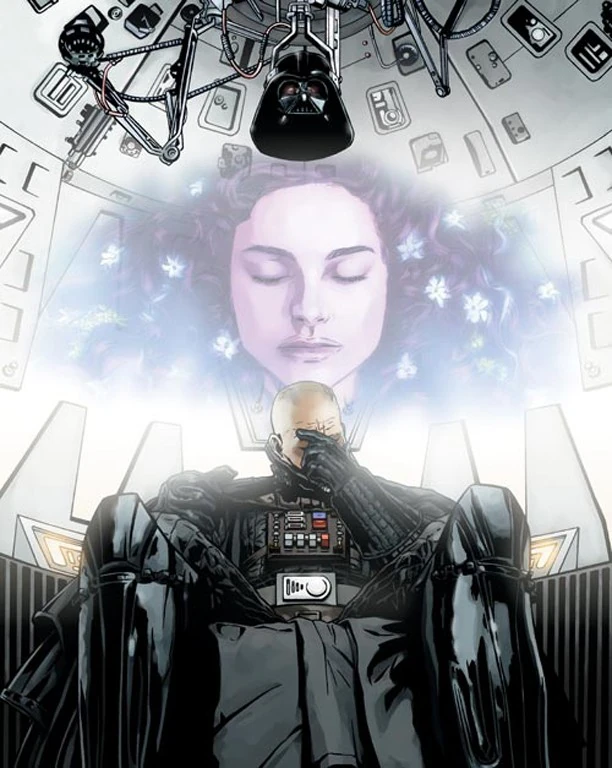It was indeed Billy Joel; on the cover of that album he is peacefully reclined, looking into the eyes of a mask. Is it his? Is it his lover’s? We will never know, but the donning of masks is a ubiquitous act that divides us and instills fear in the other. Think about it. Kids on Halloween may be cute, but if you want to make Fozzy Bear creepy, make his face out of molded plastic, poke two eyeholes in it and affix that useless elastic strap around the back. And let’s not even bring clowns into this.

There goes your opportunity to avoid being spoiled. The mask of Darth Vader is a shroud that inters Anakin in a grave that is guarded by the contrived Darth Vader. Vader is a construct, a façade to repress the true self. As the mask was lowered over the remaining shell of Anakin, there was absolute terror in his eyes. A yearning for what he had lost, an abandonment to the fear of what is to come. He created a superficial reality that was fronted by the hard and fearsome lines of his new countenance. But this is not the truth of who Anakin Skywalker is, in much the same way that every other environment of the Empire is contrived and artificial, from its sanitary hallways to its recycled air. As long as he kept his mask on, he could perpetrate the lie without fear of confronting the truth. He is fearsome to all who encounter him because the mask terrifies through its inhuman anonymity.

The great Danish existential philosopher Kierkegaard had quite a bit to say about the masks we put on. Sounds really pretentious right? Perhaps, but the dude is good. He once said, and I paraphrase from distant memories from my prequel era college classes, “I will never be a Christian, but I will always be becoming a Christian.” To totally be something is an end, while the spiritual life is a journey and a struggle that continues even after spiritual heights are achieved. But to achieve great spiritual heights, and to come to terms with the masks we wear, we must understand the difference between fear and love.
True fear is choosing a life apart from God and the love of our neighbors in order to embrace that which needs to be examined and purged. We live in the fear of God, from one point of view, as we choose ourselves over the sacrificial life for the world around us. Fear leads the embattled one to embrace the failings in light of the evidence of truth. When Kierkegaard was examining the idea of fear, as we are discussing here, he used the story of Isaac and Abraham – a father sacrificing his son, but receiving a reprieve, even though he would have carried out the sacrifice. Faced with such a terrible command as sacrificing his son the righteous Abraham followed orders out of some devotion that is alien to every day thinking. Did he behave out of fear, hoping that God would not be angry? Was he obedient hoping against hope that his sacrificial action would be ineffective? Faith replaced fear.
Kierkegaard wrote in Fear and Trembling: “Faith is the highest passion in a person. There perhaps are many in every generation who do not come to faith, but no one goes further. Whether there are also many in our day who do not find it, I do not decide… But life has tasks enough also for the person who does not come to faith, and if he loves these honestly, his life will not be wasted.” Kierkegaard only knows that Abraham did as he was instructed because something unexpected would happen, whether material or ethereal, that would validate his loving faithfulness to God. Faith, and by extension love, are what awaits us as we work through and banish the fearful masks of self-deception.
The stranger we see in the mirror, artfully crafted into a mask, is the physical manifestation of our fear of revealing the truth about our souls. But that fear needs to be crushed by the heel of love for the other, for the beloved and for God. The venerable St Anthony the Great of ancient days succeeded in humbling himself and separating himself from a life lived in fear. He said “I no longer fear the Lord, but love him.” That is a successful life story, and the one to emulate.



No comments:
Post a Comment